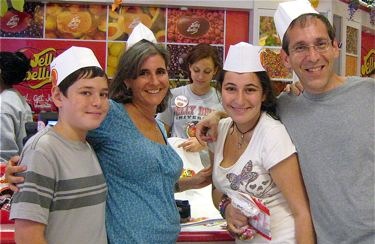 I’ve always been fascinated by the fact that in the ancient Jewish Temple, the Levites used to play music on Shabbat and holidays. What did it sound like? What instruments were used? How is it that the tradition of music on the holy days became lost and later even prohibited?
I’ve always been fascinated by the fact that in the ancient Jewish Temple, the Levites used to play music on Shabbat and holidays. What did it sound like? What instruments were used? How is it that the tradition of music on the holy days became lost and later even prohibited?
Ilan Green had a similar interest. An established rock and roll musician – he was formerly a member of the popular Israeli group Nekamat HaTracktor (in English “The Tractor’s Revengeâ€) – Green has spent the last year and a half building putative versions of 16 out of the 30 musical instruments that are mentioned in the Bible, Mishna and other Jewish texts, as well as trying to reconstruct the music that he surmises would have been played on them.
His work resulted in an October concert by Green and three band mates, commissioned by Jerusalem’s pluralistic Beit Avichai cultural center, that was both full of wonder and not a bit perplexing. Wonder because the music itself – a blatantly anachronistic mix of jazzy funk, chants and rap, with a pinch of anthem rock and audience sing along – was inspiring. Perplexing because I couldn’t help asking: How could he possibly know what the instruments and the music were really like?
The truth, admits Green is that he can’t. Instead, he’s taken a large dose of creative license, and his interpretation is more personal than historical.
For example, Psalms 8:1 refers to David, the harpist king, as playing something called a gittit. Green turned that vague mention into an instrument resembling a small ukulele.
Green’s main percussion unit is shaped like a Star of David, each point generating a different sound. Next to it stands a metal tree with small bells on each branch that Green calls ayelet hashahar, meaning morning star or dawn. Instead of tambourines, Green took the reference to the shivat haminim, the seven species of grains and fruit mentioned in the Torah, and turned them into wooden rattles with biblical names, including the pomegranate, grape, fig, olive and date (the latter looked like a Mancala board strung with real date pits).
There’s also a stringed instrument that looks like a piano and that is plucked and tapped with a mallet; a triangular harp with a dove carved into its base; and a contraption called David’s Violin that is the closest to the instrument we use today.
The concert was billed as “Voices from the Levites,†named after the tribe that played the music at the Temple. Up front and center among the four musicians and their panoply of strange instruments was a female vocalist, Avital Raz whose piercing contralto would definitely not have been heard in the male-only Temple itself, but which sounded entirely at home in the Jerusalem of today. Raz spent five years in India learning Indian devotional music and, on her return to Israel two years ago, has gained a following on the alternative music scene here.
Going alternative has also been Green’s direction since leaving Nekamat HaTracktor. His repertoire of late ranges from electronic and trance to the more academic, in keeping with his day job as head of the music department at the Naggar School of Photography, Digital Media and New Music in Jerusalem’s Musrara neighborhood.
An interest in Jewish roots has also been shown by other pop musicians, including Ehud Banai and Erez Lev Ari, both of whom use Biblical texts and liturgical songs in their music. While the latter two are newly religious, Green is still avowedly secular. It doesn’t seem to have blunted his fascination with what biblical music was like.
Green and his band lament the fact that Orthodox synagogues don’t allow instrumental music on Shabbat and holidays, even though it was permitted in the Temple. There are many possible reasons, including the fear that a musician might be tempted to fix a broken string, a Torah prohibition referred to in Tractate Shabbat of Babylonian Talmud.
Conservative and Reform synagogues in Israel also generally do not use instruments on Shabbat, unlike many of their brethren overseas. But one congregation that does is Nava Tehila, Jerusalem’s only Jewish Renewal community and one which welcomes musicians of all types to its once a month Friday services. At a recent Kabbalat Shabbat in the basement of the Kol HaNeshema Reform synagogue in the city’s Baka neighborhood, there were at least three guitars, several darbukas (the local version of a bongo drum), a violin, a French horn and a didgeridoo. The atmosphere is ecstatic, drawing more on rock and folk than cantorial crooning.
After the Jerusalem concert, I invited Shachar Kichke, the band’s main percussionist to come to the next Nava Tehila service. He promised he’d try..
Green hopes to take Voices of the Levites on the road to the United States and other Diaspora communities. In the meantime, they’re working on cutting a disc.
———————
This article originally appeared in the November 24 edition of the Jerusalem Report. An excerpt is available here. To subscribe to the Report visit https://secure.jpost.com/Subscribe/report.html.

